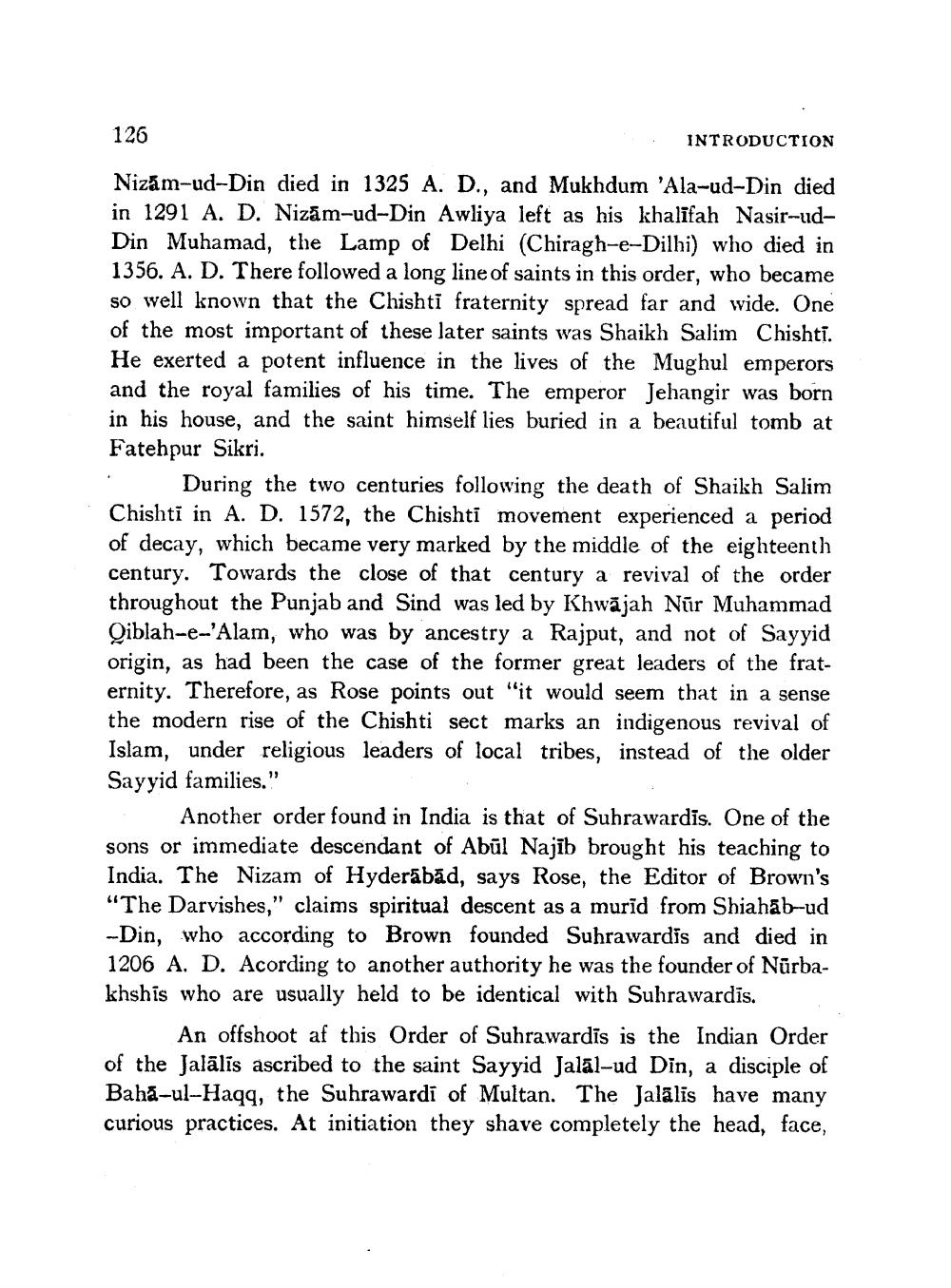________________
126
INTRODUCTION
Nizam-ud-Din died in 1325 A. D., and Mukhdum 'Ala-ud-Din died in 1291 A. D. Nizām-ud-Din Awliya left as his khalifah Nasir-udDin Muhamad, the Lamp of Delhi (Chiragh-e-Dilhi) who died in 1356. A. D. There followed a long line of saints in this order, who became So well known that the Chishti fraternity spread far and wide. One of the most important of these later saints was Shaikh Salim Chishti. He exerted a potent influence in the lives of the Mughul emperors and the royal families of his time. The emperor Jehangir was born in his house, and the saint himself lies buried in a beautiful tomb at Fatehpur Sikri.
During the two centuries following the death of Shaikh Salim Chishti in A. D. 1572, the Chishti movement experienced a period of decay, which became very marked by the middle of the eighteenth century. Towards the close of that century a revival of the order throughout the Punjab and Sind was led by Khwājah Nur Muhammad Qiblah-e-'Alam, who was by ancestry a Rajput, and not of Sayyid origin, as had been the case of the former great leaders of the fraternity. Therefore, as Rose points out "it would seem that in a sense the modern rise of the Chishti sect marks an indigenous revival of Islam, under religious leaders of local tribes, instead of the older Sayyid families.”
Another order found in India is that of Suhrawardīs. One of the sons or immediate descendant of Abul Najīb brought his teaching to India. The Nizam of Hyderabad, says Rose, the Editor of Brown's "The Darvishes," claims spiritual descent as a murid from Shiahāb-ud -Din, who according to Brown founded Suhrawardis and died in 1206 A. D. Acording to another authority he was the founder of Nürbakhshis who are usually held to be identical with Suhrawardīs.
An offshoot af this Order of Suhrawardīs is the Indian Order of the Jalālis ascribed to the saint Sayyid Jalal-ud Din, a disciple of Baha-ul-Haqg, the Suhrawardi of Multan. The Jalalis have many curious practices. At initiation they shave completely the head, face,




